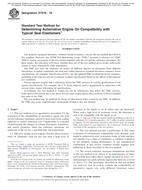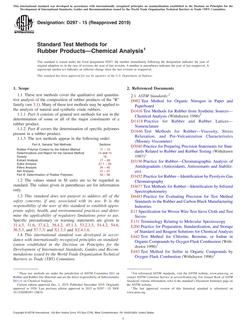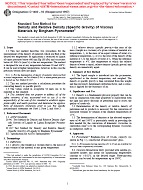1.1 The three test methods described herein are for measurement of water vapor transmission rates (WVTRs) of high-barrier multiple-unit containers (bottles), high-barrier single-unit containers (blisters), and quasi-barrier single-unit containers used for packaging pharmaceutical products. The containers are tested closed and sealed. These test methods can be used for all consumer-sized primary containers and bulk primary containers of a size limited only by the dimensions of the equipment and the weighing capacity and sensitivity of the balance.
1.2 These test methods are intended to be of sufficient sensitivity and precision to allow clear discrimination among the levels of barrier packages currently available for pharmaceutical products.
1.3 There are three methods: Method A is for bottles, Method B is for formed barrier blisters, and Method C is for formed quasi-barrier blisters. Methods B and C can be adapted for use with flexible pouches.
1.4 These test methods use gravimetric measurement to determine the rate of weight gain as a result of water vapor transmission into the package and subsequent uptake by a desiccant enclosed within the package. The packages are exposed to environments typical of those used for accelerated stability testing of drug products in the package (typically 40°C/75 % relative humidity [RH]).
1.5 For these methods, balance sensitivity, amount of desiccant, number of blisters per test unit, and weighing frequency were developed in an experiment based on Test Methods E96/E96M.
1.6 Test Methods E96/E96M gives specific instruction on the interactions among weighing frequency, number of data points necessary to establish steady state, minimum weight gain in a weighing period, and balance sensitivity.
1.7 The test methods in this standard were developed specifically for pharmaceutical bottles and blisters as closed container-closure systems. The experiment from which the methods were developed provided an inter-laboratory study from which the precision and bias statement was written. The packages in the study were small bottles and blisters used regularly for pharmaceutical solid oral dosage forms.
1.8 In spite of the specific nature of their application, the test methods in this standard should be suitable for other pharmaceutical packages and most types and sizes of other consumer packages.
1.9 The values stated in SI units are to be regarded as the standard. No other units of measurement are included in this standard. The units of measure for bottles are milligrams per bottle per day (mg/bottle-day) and for blisters, milligrams per blister cavity per day (mg/cavity-day). These units may be used for both standard and referee testing.
1.10 This standard does not purport to address all of the safety concerns, if any, associated with its use. It is the responsibility of the user of this standard to establish appropriate safety and health practices and determine the applicability of regulatory limitations prior to use.
Product Details
- Published:
- 04/01/2011
- Number of Pages:
- 7
- File Size:
- 1 file , 140 KB


